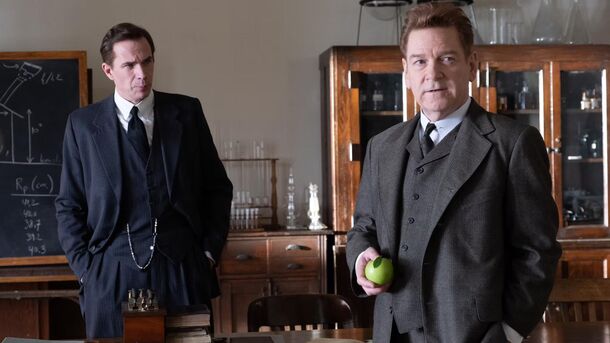Oppenheimer’s Most Mesmerizing Scenes Have 0% CGI In Them

Turns out that the highest-grossing films can be made in much simpler ways than we think.
Summary:
- Christopher Nolan ’s Oppenheimer became a huge phenomenon in the cinema world thanks to its fascinating and ambitious scenes, some of which were in fact created without any special effects’ help.
- Some behind-the-scenes interviews revealed that the scenes that captured the viewers’ attention the most were made with the use of simple marbles and small pyrotechnics.
- Surprising revelations about Nolan’s ways of work for his biggest film yet may become a huge inspiration for aspiring filmmakers.
Christopher Nolan’s Oppenheimer starring Cillian Murphy as the famous physicist responsible for the terrifying introduction of the nuclear bomb to the world is truly compelling in so many ways despite a pretty sinister idea behind the visual splendor.
And though it comes as something evident that the Trinity Test shown in the film is the overwhelming climax of the story, many viewers may have also been captured by other notable scenes — and they would be very surprised to learn some more details about these scenes’ creation.
Before the plot arrives at the ghastly consequences of Oppenheimer’s evil genius, it shows him as a student of the University of Cambridge where he meets Danish physicist Niels Bohr.

When their conversation ends with Bohr's iconic phrase “Can you hear the music, Robert?” accompanied by Ludwig Göransson’s phenomenal musical piece, the viewer suddenly gets to Oppenheimer’s inner thoughts that may appear as “mad scientist” visuals.
And these scenes are definitely some of the most memorable moments of the whole film, staying on almost the same level as the frames of the epic explosion. Though flamboyant colors of the visuals may seem to be the result of meticulous work with CGI and other computer graphics tools, they are in fact not — and, on top of that, were created with the simplest techniques.
As some behind-the-scenes interviews of the crew revealed, the post-production effects would jeopardize Nolan’s initial work on the scenes, that’s why they weren’t allowed in this case.
Despite that, VFX supervisor Andrew Jackson and SFX supervisor Scott Fisher did find a solution — and made some kind of machines that would turn marbles and magnetic beads around, as well as let some small pyrotechnics off.
The revelation about Oppenheimer’s imagination of spinning atoms being 100% real can come not only as a surprise, but also a very good incentive for young filmmakers. Indeed, if Christopher Nolan used simple marbles and toys to create the most fascinating scenes of the film of the year, then you can absolutely do the same too.